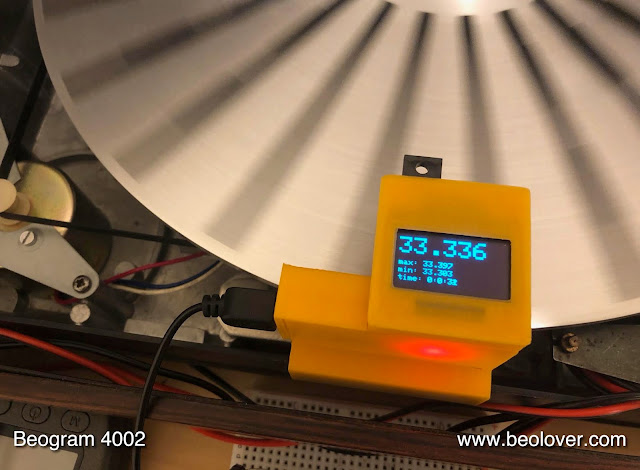The restoration of the Beogram 4004 (5526) that I have on my bench has come to an end. Today I did some more work on the hood and then the final adjustments, and then it was time for a test drive with Art Farmer ("Crawl Space" on the CTI label).
The hood needed some more attention after I polished it. The aluminum trim had come off on one side of it. I softened the old glue with a paper towel piece drenched in isopropanol:
After about 30 min the glue came off pretty easily:
I usually glue these side parts with 3M adhesive tape:
After cutting it to size with a razor blade
I removed the protective tape
This tape is ultra thin, i.e. can hardly be discerned. Then I clamped the pieces together:
And after a day of clamping the trim was attached again:
On to the adjustments:
After adjusting the sub-chassis and the platter, and the arms to be horizontally parallel to the enclosure, it was time to adjust the tone arm. First I did the arm lowering limit:
This makes sure the needle misses the ribs on the platter should the electronics malfunction and the arm be lowered onto an empty platter. Then I fixed the counter weight in place. The first step was to replace the flimsy locking washer on the bolt
with a M3 nut and a washer:
This allows locking the counter weight position in place by tightening the nut. Great for shipping a turntable. The next step was to adjust and calibrate the tracking force adjustment wheel:
Most B&O cartridges are specified for 1.2g tracking weight.
The final adjustment was the tracking feedback:
The light intensity trimmer on the Beolover LED light source makes the fine tuning very easy.
After cleaning the aluminum panels and the platter, it was finally time to play this Beogram!
I selected a recent acquisition to my collection, Art Farmer's "Crawl Space" Album, which I prepared for play with a thorough clean with the new CleanerVinyl EasyOne ultrasonic vinyl record cleaner. Art Farmer recorded this album for the CTI label in 1977. This record has quickly become one of my favorites. Very smooth and melodic. Beautiful trumpet play...another awesome CTI release. What a beolovely sight and sound!:
I will play this Beogram a bit longer to make sure there are no intermittent issues, and then it will be time for it to return to its owner!













































